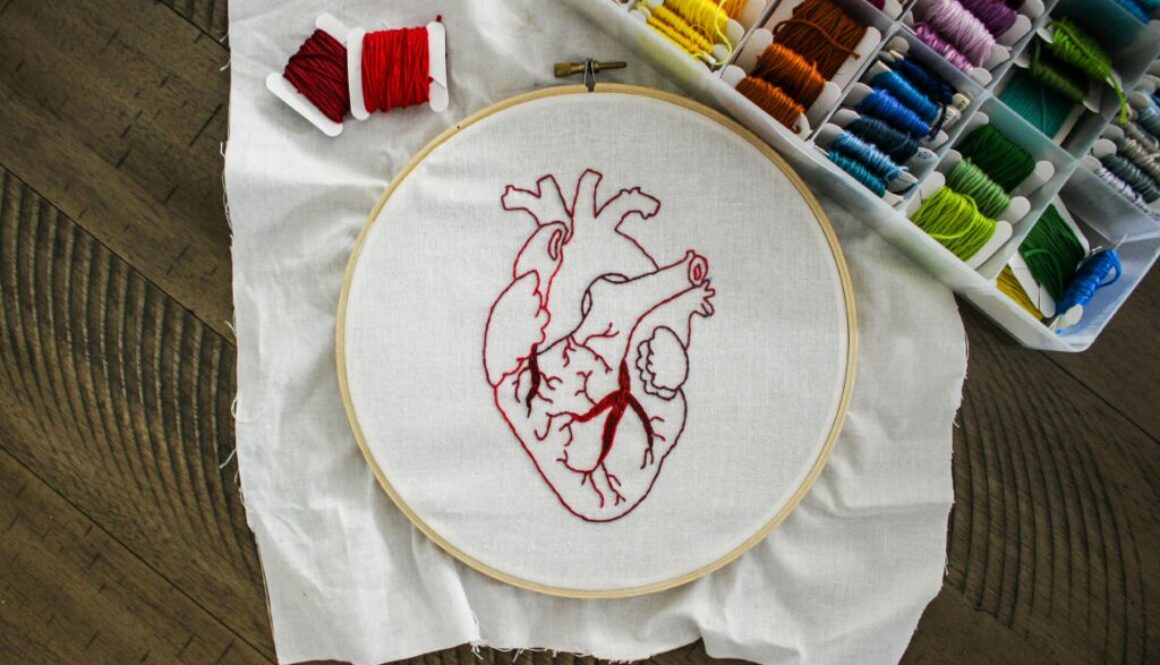Diabetes and Cholesterol Management: A Comprehensive Guide And Tips On A Healthy Lifestyle
Discover comprehensive strategies for managing diabetes and high cholesterol effectively to prevent cardiovascular complications. Learn about the connection between these conditions, their impact on health, and practical tips for diet, exercise, and medication. Understand the importance of regular monitoring of blood sugar and cholesterol levels in diabetes and cholesterol management. Explore lifestyle changes, such as quitting smoking, maintaining a healthy weight, and engaging in physical activity. Get insights into diabetic dyslipidemia and the increased cardiovascular risk associated with diabetes. Stay informed about ongoing research and advancements in treatment options. Take proactive steps today to improve your overall health and reduce the risk of heart disease and stroke.
Managing diabetes and high cholesterol is essential for preventing cardiovascular complications. These two conditions often coexist and exacerbate each other, significantly increasing the risk of heart disease and stroke. This comprehensive guide provides an in-depth look at the connection between diabetes and cholesterol, their combined impact on health, and practical strategies for managing both conditions effectively.
Understanding Cholesterol
What is Cholesterol?
Cholesterol is a waxy, fat-like substance found in every cell of the body. It plays a critical role in producing cell membranes, hormones, and vitamin D. The liver produces all the cholesterol your body needs, but cholesterol is also found in foods from animal sources such as meat, poultry, and full-fat dairy products.
Types of Cholesterol: HDL and LDL
- HDL (High-Density Lipoprotein): Often referred to as “good” cholesterol, HDL helps remove cholesterol from the arteries and transport it to the liver, where it is processed and eliminated from the body. High levels of HDL are associated with a lower risk of heart disease.
- LDL (Low-Density Lipoprotein): Known as “bad” cholesterol, LDL can build up in the walls of arteries, forming plaques that narrow and harden the arteries, leading to atherosclerosis. High levels of LDL are a significant risk factor for cardiovascular diseases.
Impact of High LDL and Low HDL on Health
When LDL levels are high and HDL levels are low, the risk of developing heart disease, stroke, and other cardiovascular conditions increases. This imbalance can lead to serious health issues, especially when combined with diabetes. High LDL cholesterol contributes to the formation of arterial plaques, while low HDL fails to adequately clear excess cholesterol from the bloodstream.
Cholesterol and Related Diseases
Coronary Heart Disease
Coronary heart disease (CHD) is one of the most common consequences of high cholesterol. Excessive LDL cholesterol leads to plaque buildup in the coronary arteries, which supply blood to the heart muscle. This can result in reduced blood flow, chest pain (angina), and heart attacks. Managing cholesterol levels is crucial in preventing CHD and its complications.
Stroke
High cholesterol levels, particularly high LDL and low HDL, are closely linked to ischemic stroke. This type of stroke occurs when a blood clot obstructs blood flow to the brain. Cholesterol plaques can rupture and trigger blood clots, leading to strokes that can have severe and lasting impacts on health and mobility.
Peripheral Vascular Disease
Peripheral vascular disease (PVD) affects blood vessels outside the heart and brain. High cholesterol can cause plaque buildup in these vessels, leading to reduced blood flow to the limbs. Symptoms of PVD include pain, cramping, and numbness in the legs, which can worsen over time and increase the risk of infections and limb amputations.
High Blood Pressure
Cholesterol buildup in the arteries contributes to high blood pressure by reducing the elasticity of blood vessels. This condition, known as endothelial dysfunction, further increases the risk of heart disease and stroke. High blood pressure can also damage the arteries, making them more susceptible to plaque buildup.
Erectile Dysfunction
Men with high cholesterol are at a greater risk of erectile dysfunction (ED). Cholesterol affects blood flow throughout the body, including to the penis, impacting sexual health and overall well-being. ED can be an early warning sign of cardiovascular problems, indicating the need for cholesterol management.
The Interplay Between Diabetes and Cholesterol
How Diabetes Affects Cholesterol Levels
Diabetes significantly impacts cholesterol levels, often leading to a condition known as diabetic dyslipidemia. This condition is characterized by high triglycerides, low HDL, and high LDL, creating a dangerous lipid profile that heightens the risk of cardiovascular diseases. Elevated blood sugar levels can alter lipid metabolism, leading to the accumulation of harmful cholesterol.
Diabetic Dyslipidemia
People with diabetes often have an imbalance of cholesterol levels, which exacerbates their risk of heart disease and stroke. Diabetic dyslipidemia involves:
- High Triglycerides: Elevated levels of this type of fat in the blood.
- Low HDL Cholesterol: Reduced levels of “good” cholesterol.
- High LDL Cholesterol: Increased levels of “bad” cholesterol, often in a smaller, denser form that is more likely to cause arterial damage.
Increased Cardiovascular Risk
The combination of diabetes and high cholesterol creates a perfect storm for cardiovascular complications. Insulin resistance, a hallmark of type 2 diabetes, is closely linked to abnormal cholesterol levels, increasing the likelihood of heart attacks and strokes. This interplay makes managing both conditions critically important for overall health.
Ongoing Research
Research continues to explore the intricate relationship between blood sugar, insulin, and cholesterol. Studies are focusing on how diabetes medications affect cholesterol levels and the potential for new treatments targeting both conditions simultaneously. Understanding these interactions can lead to better treatment and management strategies for individuals with both diabetes and high cholesterol.
Managing Cholesterol and Diabetes Together
Regular Monitoring
Consistent monitoring of cholesterol levels and blood sugar is vital for managing both conditions. Key numbers to track include:
- Blood Sugar: Regular monitoring helps keep blood sugar levels within target ranges.
- LDL Cholesterol: Aim for lower levels to reduce the risk of arterial plaque buildup.
- HDL Cholesterol: Higher levels are beneficial for heart health.
- Triglycerides: Keeping these levels low can help prevent complications.
- Blood Pressure: Maintaining healthy blood pressure is crucial for reducing cardiovascular risk.
Diet and Nutrition
A balanced diet plays a crucial role in managing cholesterol and diabetes. Key dietary recommendations include:
Foods to Include:
- Oily Fish: Rich in omega-3 fatty acids, which can lower triglycerides.
- Fruits and Vegetables: High in fiber, vitamins, and antioxidants.
- Nuts: Contain healthy fats and fiber.
- Soluble Fiber: Found in oats, beans, and certain fruits and vegetables, helps reduce LDL cholesterol.
Functional Foods:
- Plant Sterols and Stanols: These can help lower cholesterol by blocking its absorption in the intestines.
- Whole Grains: Such as barley and quinoa, provide nutrients and fiber.
Dietary Tips:
- Limit Unhealthy Fats: Reduce intake of saturated and trans fats found in processed foods.
- Increase Soluble Fiber: Helps lower LDL cholesterol and improve blood sugar control.
Physical Activity
Regular exercise is essential for maintaining healthy cholesterol levels and blood sugar control. Benefits include:
- Aerobic Exercise: Activities such as walking, running, and cycling help lower LDL and raise HDL cholesterol.
- Weight Training: Builds muscle mass and improves overall metabolic health.
- Specific Activities:
- Walking After Meals: Helps regulate blood sugar levels.
- Daily Exercise Routine: Consistency is key to achieving long-term benefits.
Lifestyle Changes to Lower Cholesterol
Quitting Smoking
Smoking adversely affects cholesterol levels and heart health. Quitting smoking can improve HDL levels and overall cardiovascular health. Additionally, quitting smoking reduces the risk of various diseases, including cancer and chronic obstructive pulmonary disease (COPD).
Weight Management
Maintaining a healthy weight is crucial for managing both diabetes and cholesterol. Strategies include:
- Healthy Eating: Focus on a balanced diet rich in whole foods, lean proteins, and healthy fats.
- Regular Exercise: Incorporate both aerobic and strength-training exercises into your routine.
- Mindful Eating: Pay attention to portion sizes and avoid mindless snacking.
Medication
When diet and exercise are not enough, medications may be necessary. Statins are commonly prescribed to lower LDL cholesterol. For diabetics, it’s essential to manage medications carefully to avoid interactions and complications. Other medications that may be used include:
- Fibrates: Help lower triglycerides and increase HDL cholesterol.
- Niacin: Can improve HDL levels and lower triglycerides.
- PCSK9 Inhibitors: Newer medications that significantly reduce LDL cholesterol levels.
Additional Health Considerations for Diabetics
Monitoring Overall Health
Regular check-ups are critical for managing diabetes and preventing complications. Important aspects include:
- Eyes: Regular eye exams to detect diabetic retinopathy, a leading cause of blindness.
- Feet: Routine foot care to prevent ulcers and infections, common issues for diabetics.
- Teeth: Good oral hygiene and regular dental visits to prevent gum disease, which can worsen diabetes control.
- Immune System: Staying up-to-date with vaccinations and managing overall health to prevent infections.
Preventative Measures
- Healthy Meals: Plan balanced meals that control blood sugar and cholesterol. Use tools like the plate method to ensure proper portions of vegetables, protein, and grains.
- Physical Activity: Engage in regular exercise tailored to your fitness level and health status. Aim for at least 150 minutes of moderate-intensity aerobic activity each week.
Practical Tips for Managing Diabetes and Cholesterol
Daily Habits for Maintaining Health
Develop routines that support healthy living, such as regular meal times and consistent exercise. Keeping a health diary to track progress and make adjustments can be beneficial. Key habits include:
- Balanced Diet: Ensure each meal is balanced with a mix of carbohydrates, proteins, and fats. Incorporate plenty of fiber-rich foods.
- Regular Exercise: Aim for at least 30 minutes of moderate exercise most days of the week. Include activities you enjoy to make it sustainable.
- Medication Adherence: Take medications as prescribed and discuss any side effects with your doctor.
- Hydration: Drink plenty of water throughout the day to stay hydrated and support overall health.
Tips for Managing Blood Sugar Levels
Monitoring your blood sugar regularly is crucial. Use a glucometer to check levels as recommended by your healthcare provider. Strategies to manage blood sugar include:
- Carbohydrate Counting: Be aware of the carbohydrate content in foods to maintain stable blood sugar levels.
- Glycemic Index: Choose foods with a low glycemic index to prevent spikes in blood sugar.
- Regular Meals and Snacks: Avoid long gaps between meals to maintain steady blood sugar levels.
Strategies for Long-Term Health Improvement
- Education: Stay informed about diabetes and cholesterol management through reliable sources and ongoing education.
- Support Networks: Join support groups or seek counseling to manage stress and stay motivated.
- Healthcare Team: Work closely with your healthcare providers, including doctors, dietitians, and pharmacists, to create a personalized health plan.
Conclusion
Effectively managing diabetes and high cholesterol is essential for preventing cardiovascular diseases. By adopting a healthy lifestyle, monitoring key health indicators, and making informed choices about diet and exercise, individuals can significantly reduce their risk of heart disease and stroke. Small changes can lead to substantial improvements in health outcomes, fostering a longer, healthier life. Taking proactive steps today can ensure a better quality of life tomorrow.

